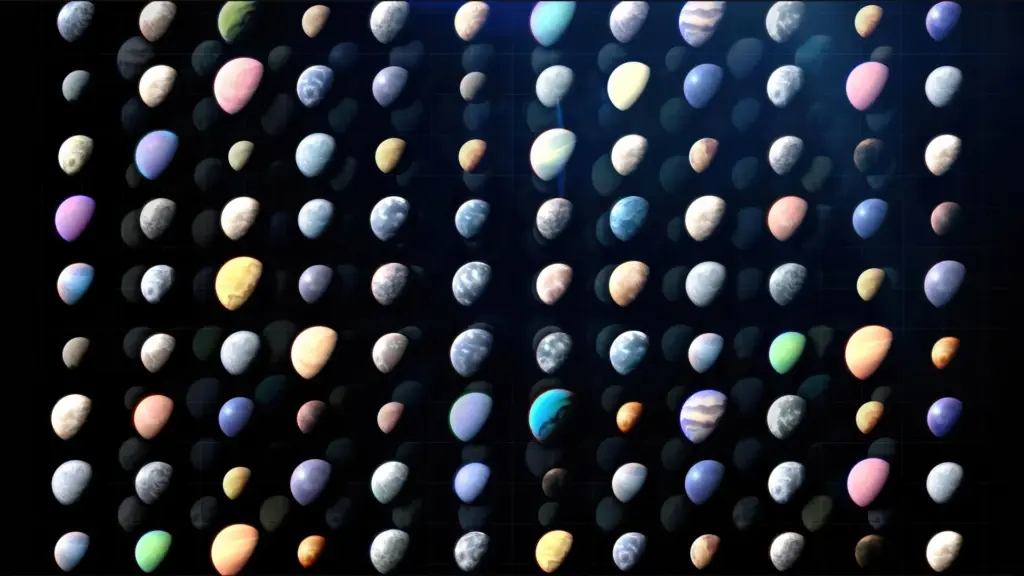
NASA has confirmed the discovery of its 6,000th exoplanet, marking a significant milestone in the agency’s decades-long quest to explore the cosmos. This achievement highlights the transformative impact of NASA’s space telescopes in reshaping humanity’s understanding of the universe.
“This milestone represents decades of cosmic exploration driven by NASA space telescopes — exploration that has completely changed the way humanity views the night sky,” said Shawn Domagal-Goldman, acting director of the Astrophysics Division at NASA Headquarters in Washington. “Step by step, from discovery to characterization, NASA missions have built the foundation to answering a fundamental question: Are we alone?”
The Journey of Exoplanet Discovery
The journey to this milestone began in 1995, when the first exoplanet was discovered orbiting a star similar to our Sun. Since then, the field of exoplanet research has evolved rapidly, with scientists identifying a diverse array of planets beyond our solar system. These discoveries have not only increased the known count of exoplanets but also expanded our understanding of planetary systems.
According to researchers, there are likely billions of planets within the Milky Way galaxy. However, finding them remains a complex challenge. The discovery of these planets allows scientists to compare them to those in our own solar system, revealing intriguing differences and similarities.
Unveiling the Universe’s Diversity
While our solar system hosts an equal number of rocky and giant planets, rocky planets appear to be more common throughout the universe. Researchers have uncovered a range of planets that defy the characteristics of those in our solar system. These include Jupiter-sized planets orbiting closer to their stars than Mercury does to the Sun, planets with dual star systems, and even planets with no stars at all.
“Each of the different types of planets we discover gives us information about the conditions under which planets can form and, ultimately, how common planets like Earth might be, and where we should be looking for them,” said Dawn Gelino, head of NASA’s Exoplanet Exploration Program (ExEP) at the Jet Propulsion Laboratory in Southern California.
Methods and Challenges in Exoplanet Detection
Despite the impressive number of confirmed exoplanets, fewer than 100 have been directly imaged due to the faintness of most planets compared to their parent stars. The majority of exoplanet detections rely on indirect methods, such as the transit method, where astronomers observe a star’s light dimming as a planet passes in front of it.
To ensure the accuracy of these detections, most exoplanet candidates require confirmation through follow-up observations with additional telescopes. This meticulous process contributes to the long list of candidates in the NASA Exoplanet Archive awaiting confirmation.
“We really need the whole community working together if we want to maximize our investments in these missions that are churning out exoplanet candidates,” said Aurora Kesseli, deputy science lead for the NASA Exoplanet Archive at IPAC.
Anticipating Future Discoveries
The pace of exoplanet discoveries has accelerated in recent years, with the database reaching 5,000 confirmed exoplanets just three years ago. This trend is expected to continue, driven by upcoming missions such as the European Space Agency’s Gaia mission and NASA’s Nancy Grace Roman Space Telescope, which will employ techniques like astrometry and gravitational microlensing to discover new exoplanets.
The Future of Exoplanet Science
Looking ahead, NASA’s exoplanet research will focus on identifying rocky planets similar to Earth and analyzing their atmospheres for biosignatures—indicators of past or present life. The James Webb Space Telescope has already analyzed the atmospheres of over 100 exoplanets, but studying Earth-like planets will require advancements in technology to overcome the challenge of starlight glare.
NASA is developing new tools, such as the Roman Coronagraph, to block starlight and enhance the visibility of faint planets. These innovations will enable direct imaging of planets similar in size and temperature to Jupiter, offering new insights into the diversity of planetary systems.
Additional advances in coronagraph technology will be needed to build a coronagraph that can detect a planet like Earth. NASA is working on a concept for such a mission, currently named the Habitable Worlds Observatory.
Collaborative Efforts in Exoplanet Exploration
NASA’s Exoplanet Exploration Program (ExEP) plays a pivotal role in coordinating the agency’s efforts to discover and understand planetary systems around nearby stars. The program integrates cohesive strategies for future discoveries and collaborates with the science operations and analysis center, NExScI, based at IPAC, Caltech’s science and data center for astrophysics and planetary science.
As NASA continues to push the boundaries of exoplanet science, the promise of new discoveries remains a unifying force, inspiring curiosity and innovation in the quest to answer the age-old question: Are we alone in the universe?






